Artist's conception of an impending collision between a coronal mass ejection and the Earth's magnetosphere.
Click on image for full size
NASA
Spiral Path of Material
For a planet to be affected by a blob of material being ejected by the sun, the planet must be in the path of the blob, as shown in this picture. The Earth and its magnetosphere are shown in the bottom right.
Disturbances in the solar wind arrive at the Earth within hours to days after a violent event on the Sun.
If the Earth were on the other side of the Sun (the top left of the picture), then the blob would miss the Earth, and there would be no geomagnetic storm or powerful aurora.
You might also be interested in:
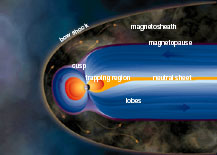
The Earth has a magnetic field with north and south poles. The magnetic field of the Earth is enclosed in a region surrounding the Earth called the magnetosphere. As the Earth rotates, its hot core generates
...more
The solar wind is formed as the Sun's topmost layer blows off into space carrying with it magnetic fields still attached to the Sun. Gusts and disturbances form in the solar wind associated with violent
...more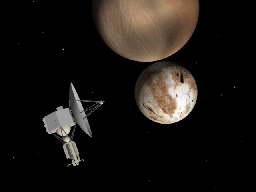
AU stands for Astronomical Units. Distances in space are too large to measure in Earth standards like miles or kilometers. For distances too large to measue in AU, we use light years. A light year is the
...more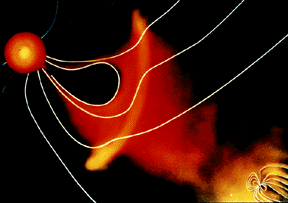
For a planet to be affected by a blob of material being ejected by the sun, the planet must be in the path of the blob, as shown in this picture. The Earth and its magnetosphere are shown in the bottom
...more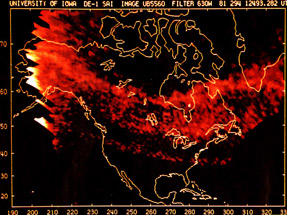
The aurora we are most familiar with is the polar aurora. This is what people are referring to when they speak of the northern or southern lights. But there are other less-known auroral activity, such
...more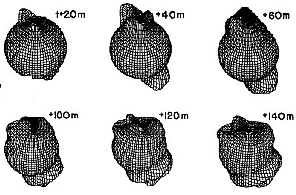
This figure shows the effect of the aurora on the atmosphere. When FAC's enter the atmosphere and create the aurora, they warm the atmosphere impulsively. This impulse travels throughout the atmosphere
...more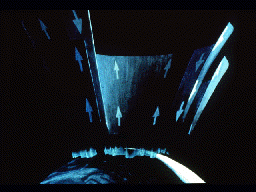
This picture illustrates the streaming of particles into and out of the auroral zone, as Field-aligned currents (FAC's) short-circuit through the ionosphere. Some of the particles entering the auroral
...more














